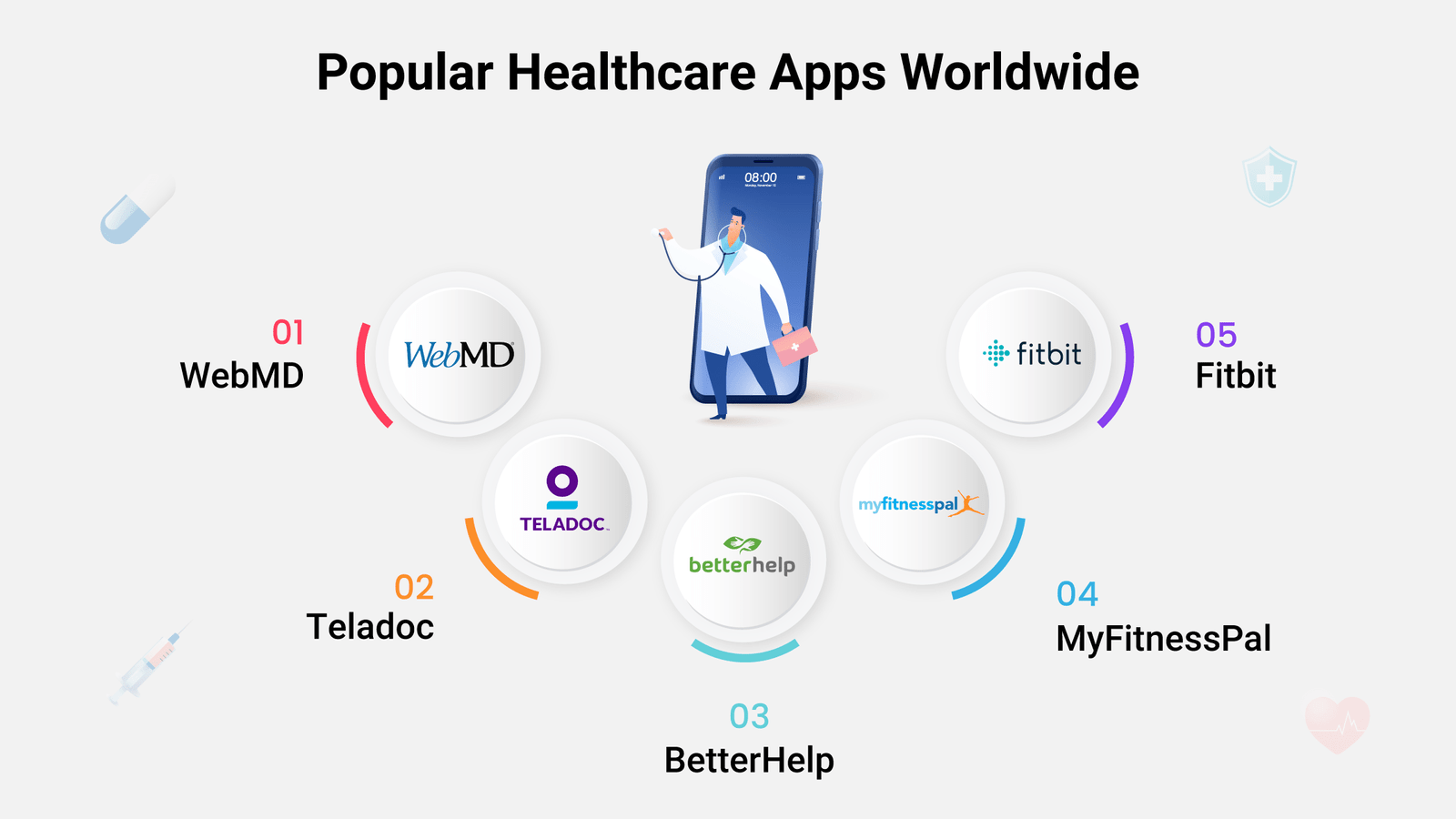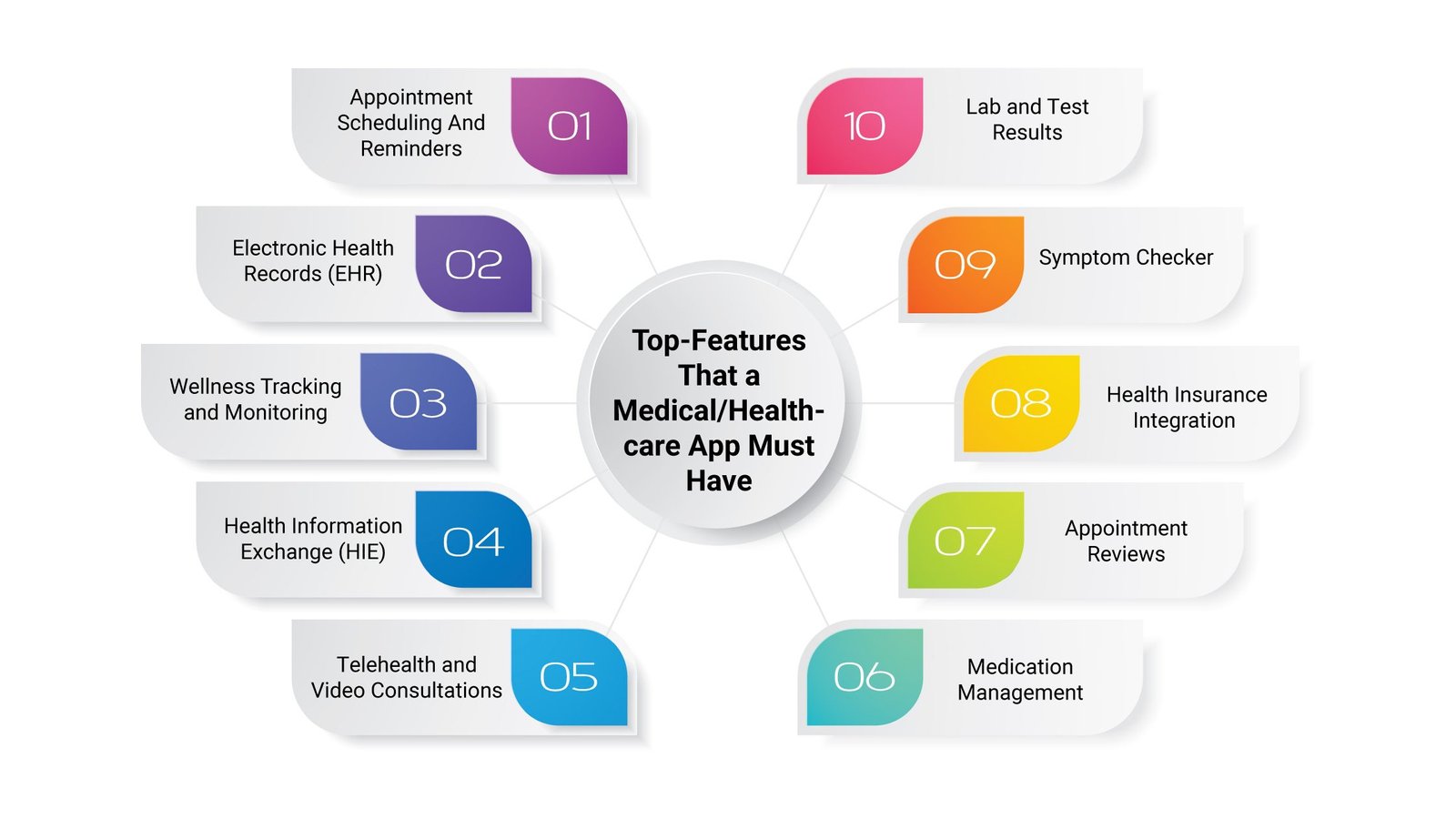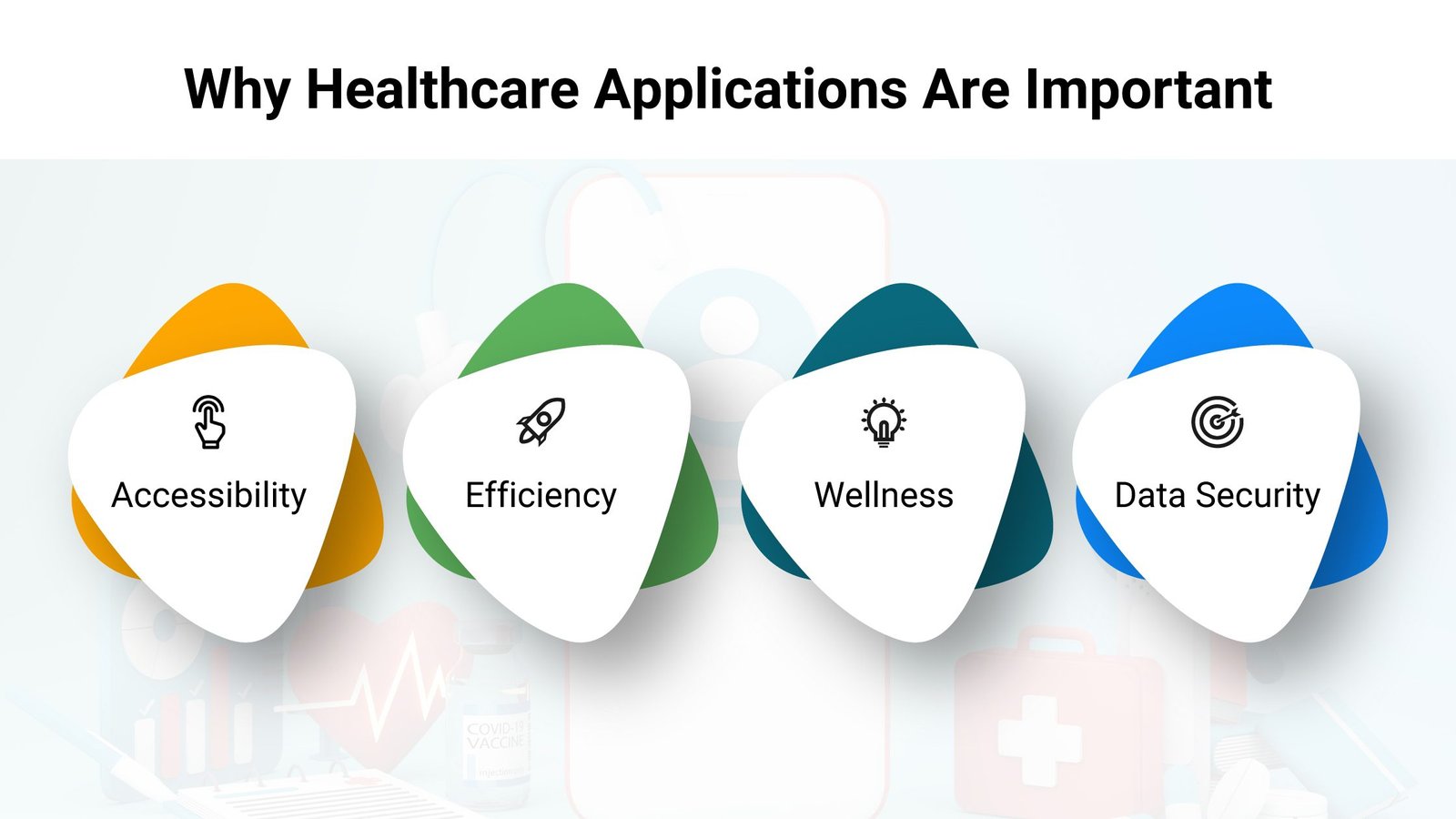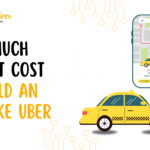
2023 Healthcare Apps Overview: Features, Popular Apps, and Stats for Newly Built Apps
TABLE OF CONTENTS
Introduction to Healthcare Apps and Their Importance
A healthcare application, or health app, is like a helpful digital tool that makes taking care of your health easier. It’s something you can use on your phone or computer to do many health-related things.
Healthcare apps, including doctor appointment apps, are important because they change the way we get medical help. You can make doctor’s appointments, see your medical records, and even talk to doctors online through these apps. They make things more convenient and reduce the need to go to the doctor’s office all the time.
These apps also help you keep an eye on your health. You can track your fitness, check your heart rate, and monitor conditions you might have, like diabetes. This information helps you stay healthy by giving you the right info at the right time.
Doctors and nurses find these apps helpful too. They use them to manage appointments and keep important info in one place. It helps them work together and provide better care.
In short, healthcare apps are like health helpers in your pocket. They’re easy to use and make taking care of yourself simpler. They’re changing how we look after our health and making it better for everyone.
Let’s explore the critical components that every medical application, healthcare app, wellness application, and healthcare technology should possess. Whether you’re a healthcare provider or a wellness enthusiast, this guide will shed light on the features that define top-notch healthcare software.
Number of Newly Developed Apps in 2023 in Different Countries
In 2023, in the USA there has more than 10,000 mobile apps were developed in the healthcare sector, and in the UK this number is more than 5000. In India, there are 3000+ medical apps developed. In the Netherlands and Australia, 1000+ healthcare apps are developed.

Popular Healthcare Apps Worldwide

Here is a list of 5 popular healthcare apps worldwide, with a description of each:
1. WebMD: WebMD is a popular healthcare app that provides users with information on a wide range of health topics, including symptoms, treatments, and medications. It also has a symptom checker tool that can help users identify potential health problems.
2. Teladoc: Teladoc is a healthcare app that allows users to have video consultations with doctors. This can be a convenient way to get medical care without having to go to a doctor’s office.
3. BetterHelp: BetterHelp is a healthcare app that provides users with access to online therapy. This can be a good option for people who need mental health support but don’t have time to see a therapist in person.
4. MyFitnessPal: MyFitnessPal is a fitness app that helps users track their calories, exercise, and weight loss progress. It also has a database of over 6 million foods, so users can easily look up the nutritional information of what they’re eating.
5. Fitbit: Fitbit is a fitness tracker that helps users track their steps, heart rate, sleep, and other fitness metrics. It also has a social media component that allows users to connect with friends and family and compete in fitness challenges.
These are just a few examples of the many popular healthcare apps available worldwide. When choosing a healthcare app, it is important to consider your individual needs and preferences. It is also important to make sure that the app is developed by a reputable organization and that it has good reviews from other users.
Top-Features That a Medical/Healthcare App Must Have

1. Appointment Scheduling And Reminders: Appointment scheduling and reminders are an important part of healthcare. They help to ensure that patients have access to the care they need when they need it. Appointment scheduling systems can also help to reduce the number of missed appointments, which can save healthcare providers time and money.
There are a variety of appointment scheduling and reminder systems available, both manual and automated. Manual systems typically involve patients calling or visiting a healthcare provider’s office to schedule appointments. Automated systems allow patients to schedule appointments online or through a mobile app.
Automated appointment scheduling systems often offer features such as:
User-Friendly Appointment Scheduling: With an intuitive interface, users can effortlessly select their preferred dates and times for appointments. This feature also allows users to browse healthcare providers, specialties, or clinics, ensuring that they can find the right match for their needs. An availability calendar displays open slots, making it easy for users to pick a suitable time that fits their schedule.
Appointment Customization: Users can specify the reason for the appointment, share any particular health concerns, and indicate the type of appointment they require, whether it’s a regular check-up, follow-up visit, or a consultation with a specialist. Additionally, users can include special requests or notes for their healthcare provider, such as updates to their medical history.
Multiple Appointment Types: Users can choose between in-person visits, telehealth consultations, or video appointments, depending on their preferences and the nature of their healthcare needs. This versatility ensures that users have access to the most suitable appointment options, whether they prefer face-to-face consultations or the convenience of remote healthcare services.
2. Electronic Health Records (EHR): EHR integration allows users to access their complete medical history and records in one place. This means they can easily retrieve information about past treatments, diagnoses, medications, and allergies. Having this information readily available is crucial for informed decision-making and can lead to better healthcare outcomes.
Here are some of the features of Electronic Health Records (EHR):
- Data Sharing
- Clinical Decision support
- Patient Engagement
- Reduced Duplication of Tests
- Telehealth and Remote Monitoring
- Streamlined Administrative Processes
- Patient Empowerment
EHR integration is becoming increasingly important in healthcare as healthcare providers strive to improve the quality and efficiency of care. By connecting different EHR systems, healthcare providers can improve patient care, reduce administrative burden, and improve efficiency.
3. Wellness Tracking and Monitoring: Wellness tracking and monitoring provide individuals with a valuable tool to proactively manage their health and well-being. These features in health and fitness apps enable users to keep tabs on various aspects of their physical and mental health, including exercise routines, sleep patterns, dietary choices, stress levels, and more. By regularly monitoring these metrics and analyzing trends, individuals can make informed decisions about their lifestyle, set achievable health goals, and track their progress over time. This data-driven approach empowers individuals to make positive changes, optimize their wellness routines, and ultimately lead healthier, happier lives.
Here are some of the features of Wellness Tracking and Monitoring:
- Data Collection
- Data Analysis
- Goal setting
- Progress Tracking
- Reporting
4. Health Information Exchange (HIE): With HIE integration, healthcare apps can facilitate the secure and efficient exchange of medical information, including patient records, test results, treatment plans, and more. Patients benefit by having their comprehensive medical history accessible in one place, which improves care coordination and reduces the risk of errors.
Healthcare providers can make more informed decisions, collaborate with colleagues, and provide more personalized care, all while saving time on administrative tasks. Furthermore, HIE features enhance the continuity of care during transitions between healthcare settings, such as from hospital to primary care, ensuring that critical information is readily available. In summary, the HIE feature in a healthcare app plays a crucial role in enhancing patient care, promoting interoperability among healthcare systems, and ultimately improving the overall healthcare experience.
HIE uses a variety of technologies to enable seamless data sharing, including:
Standardized data formats: HIE systems use standardized data formats so that data from different healthcare providers can be easily understood and shared.
Secure data transfer: HIE systems use secure data transfer protocols to protect patient privacy and security.
Real-time data sharing: HIE systems can share data in real-time so that providers always have access to the most up-to-date information about their patients.
5. Telehealth and Video Consultations: Telehealth and video appointments are really important for your healthcare app. This feature plays an important role in healthcare apps. Here’s why you need them:
Healthcare Access: These features let people see doctors from far away. It’s like talking to your doctor on your phone or computer. This is super important because it means more people can get the medical help they need.
Easy Appointments: Your app should make it easy for people to set up video appointments. No more sitting in crowded waiting rooms; they can chat with their doctors at home or wherever they are.
Keep Info Safe: These video chats are private and secure, so your health information stays safe. It’s like talking to your doctor in a secret room.
Talk About Health: During these video talks, you can discuss health issues and get advice from your doctor. If you need medicine, your doctor can even send the prescription to your pharmacy online.
Follow-Up Help: Video appointments aren’t just for the first visit. You can use them for follow-up visits too. This saves time and is super helpful for people with long-term health problems.
6. Medication Management: Taking medicine the right way is super important. This feature is also important for medical apps. Here’s why your app needs to help with this:
Reminders: Your app can remind people when it’s time to take their medicine. This is crucial because sometimes we forget.
Stay Safe: It can also provide info about the medicine – like how to take it and what to watch out for. This keeps people safe.
No Mixing: Some medicines don’t work well together. Your app can warn people about this, so they don’t mix medicines that can be harmful.
Track Progress: Your app helps people see how they’re doing. They can record how they feel and any side effects. This helps their doctors adjust their treatment if needed.
Stay Healthy: Your app empowers people to take control of their health. It’s not just handy; it’s a way to make sure they get better and stay healthy.
7. Appointment Reviews: Appointment reviews empower users to share their experiences and feedback about healthcare providers. This feature encourages transparency and helps others make informed choices when selecting a doctor or specialist. Users can provide ratings and detailed comments about their appointments, covering various aspects of the healthcare experience, such as:
User Feedback: Users can rate their appointments on a scale, often from one to five stars, and provide written reviews that delve into specific aspects of the visit. This could include comments on the doctor’s bedside manner, communication skills, and the clarity of medical explanations.
Searchable Database: The reviews contribute to building a valuable database of healthcare provider ratings and comments. Future users can search for doctors, specialists, or clinics based on these ratings and read patient testimonials to get a sense of what to expect.
Improved Quality: The existence of reviews motivates healthcare providers to maintain high standards of care. Knowing that patients can share their experiences publicly encourages providers to address any concerns raised by patients promptly. This, in turn, contributes to the continuous improvement of healthcare services.
8. Health Insurance Integration: Health insurance integration simplifies the management of healthcare coverage within the app. Users can link their insurance information for easy access to policy details, claims tracking, and cost estimates, resulting in a smoother healthcare experience.
Policy Details: Users can view comprehensive details of their insurance policies through the app. This includes information on coverage limits, deductibles, copayments, and in-network providers.
Claims Tracking: The app provides a transparent overview of insurance claims, allowing users to monitor the status of claims submitted for medical services. This ensures that claims are processed correctly and efficiently.
Cost Estimation: To help users plan for potential healthcare expenses, the app can provide cost estimates for medical procedures and services. These estimates take into account the user’s insurance coverage and help users make financially informed decisions about their healthcare.
Network Search: Users can easily find healthcare providers within their insurance network using the app. This feature optimizes cost savings by guiding users toward in-network providers, reducing out-of-pocket expenses.
9. Symptom Checker: The symptom checker feature assists users in understanding their health concerns better by providing information about possible causes of symptoms and when to seek medical attention. It aims to empower users to make informed decisions about their health.
Symptom Input: Users can enter their symptoms into the app, describing what they’re experiencing in detail. The app may use a user-friendly interface that prompts users to input their symptoms step by step.
Possible Causes: Based on the symptoms provided, the app generates a list of potential causes and conditions. It may offer detailed information about each possible cause, including common symptoms, risk factors, and when to consult a healthcare professional.
Severity Assessment: The feature helps users gauge the severity of their symptoms. It provides guidance on whether immediate medical attention is necessary or if self-care measures are appropriate. This assists users in making informed decisions about when and where to seek medical help.
Educational Resource: The symptom checker serves as an educational resource. It not only provides potential diagnoses but also offers comprehensive information about various health conditions, symptoms, and treatment options. This promotes health literacy and empowers users to have more meaningful conversations with their healthcare providers.
10. Lab and Test Results: Lab and test results storage within the app allows users and their healthcare providers to track and manage health data effectively. It ensures that critical health information is readily accessible and organized.
Secure Storage: Users can securely store and access their lab test results, diagnostic reports, and medical imaging files directly within the app. This secure storage prevents the loss of important health data and ensures confidentiality.
Historical Data: The app maintains a historical record of lab results, enabling users to track changes in their health over time. This feature is particularly valuable for individuals with chronic conditions or those undergoing long-term treatments, as it simplifies the process of assessing progress or identifying trends.
Sharing with Providers: Users can easily share their test results with healthcare providers when needed. This streamlines the communication between users and their doctors, allowing for timely analysis and treatment adjustments based on the latest data.
Graphical Representation: To enhance user comprehension, the app may present lab and test results in graphical formats, such as charts or graphs. These visual representations make it easier for users and healthcare professionals to interpret and analyze data, facilitating more effective communication about health trends and treatment plans.
Why Healthcare Applications Are Important

Healthcare applications, often referred to as medical software or healthcare apps, are the cornerstone of the health tech revolution. These applications bridge the gap between traditional healthcare and modern technology, offering an array of benefits:
Accessibility: Healthcare apps put healthcare information and services at your fingertips, 24/7. No more waiting rooms or endless phone calls.
Efficiency: Medical software streamlines administrative tasks, such as medical billing, making healthcare delivery more efficient.
Wellness: Wellness apps empower individuals to take control of their health and well-being, from tracking fitness goals to monitoring chronic conditions.
Data Security: With the latest health information technology, your personal data is secure and compliant with privacy regulations.
Conclusion
In conclusion, these must-have features are the building blocks of a comprehensive and effective healthcare application. Medical applications become very important when everyone wants to use online services. These healthcare apps can make life easier for both doctors and patients.
If you are looking for freelance app developers, you can hire dedicated mobile app developers from our team. For this kind of complex app, you must have a team consisting of a designer, a mobile app developer, and a backend developer. We, at Boffin Coders, can fulfill your needs at a very affordable price. Your search for a mobile app development company ends here. We can be a perfect healthcare app development company for you!
See More blogs related to healthcare applications:
The Founder’s Roadmap to Crafting a Successful Healthcare App: Step-by-Step Guide
Top 8 Features of a Doctor Appointment Booking App

As a blog author, I have a strong passion for staying up-to-date with the latest trends and technologies. My expertise lies in WordPress development, SEO optimization, and content writing. Whether you have an idea for a website, mobile app, or custom software, our team is here to guide you. Get a free consultation with us. Additionally, I am available to provide the best SEO and content writing services to boost your online presence.









